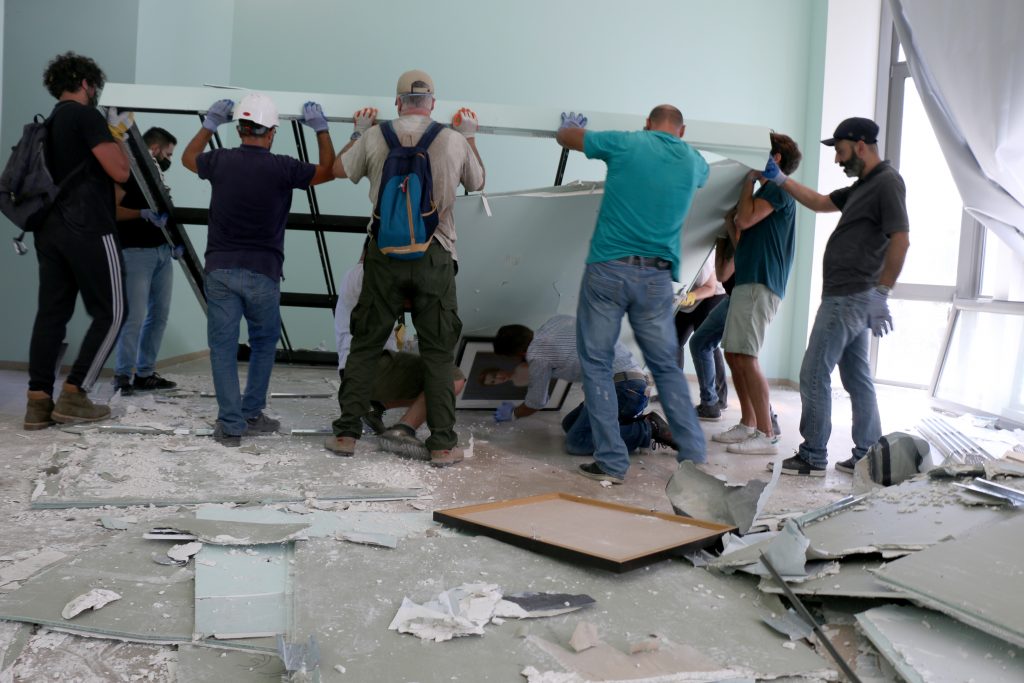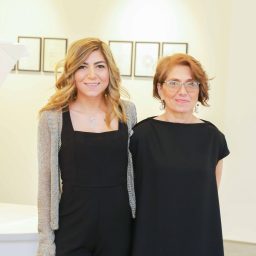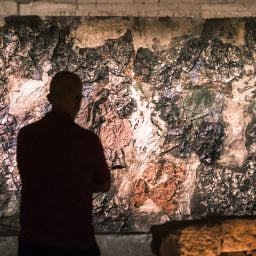“I have made my analysis and Lebanon has Stage IV cancer,” I overheard a Lebanese economist, who was visiting Beirut from New York, quip darkly one afternoon last August.
The devastating explosion on August 4 decimated large parts of Lebanon’s capital—but the country was already ailing badly in the year leading up to the disaster. To truly appreciate the state of the nation and the challenges it faces moving forward, those in the cultural sector say, one must first understand the context in which the explosion erupted.
“Beirut, more than Lebanon, is a central place for the whole region,” said Saleh Barakat, who runs Agial Art Gallery and Saleh Barakat Gallery. “It represents a free culture that is being endangered today.” His gallery was severely damaged in the explosions and lost one member of its staff, Firas Dahwish. The logistician and art handler was in intensive care for three days before he passed away.
“The survival of Beirut means the survival of this plurality, diversity, tolerance, culture, and freedom of expression,” Barakat continued. “If we do not get help now, we risk becoming another Gaza, Syria, or Yemen.”
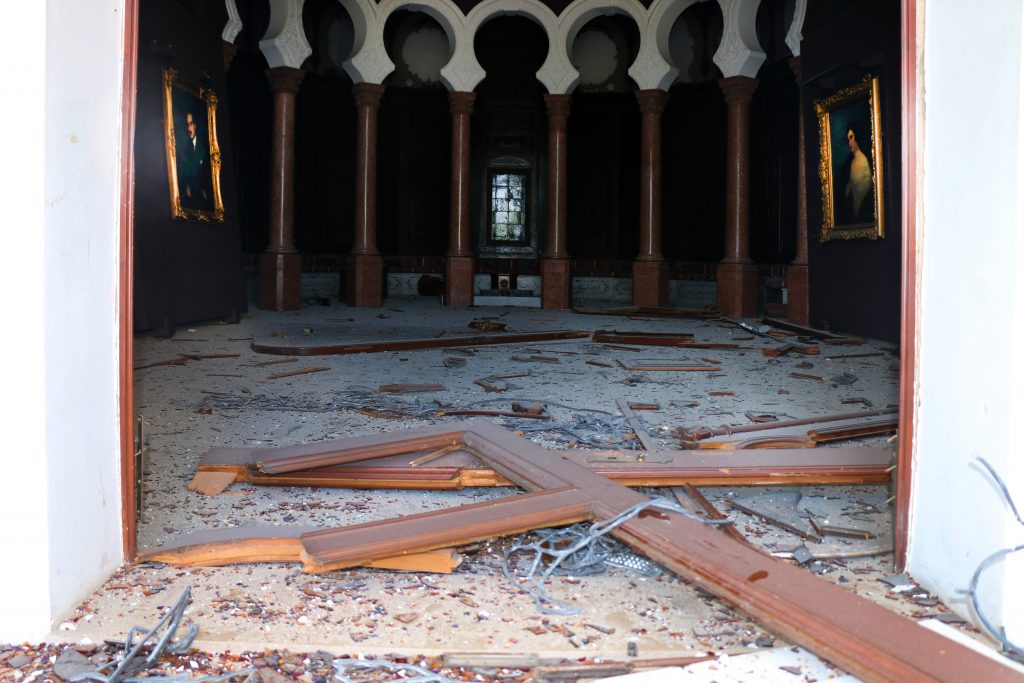
Salon Arabe after the blast.
In the wake of the explosion, cultural organizations from around the world—including UNESCO, the International Council of Museums, the World Monuments Fund, and the Louvre—pledged to offer support in the rebuilding of the city’s museums and arts organizations. But local experts say the physical damage is just one element of a much more complex web of problems.
A Year of Turmoil
Last fall, ten months before the explosion, the streets of Beirut were overtaken by what is known here as the October Revolution, with young men and women demanding sweeping political change and an end to the country’s sectarian system of government.
These were peaceful marches, filled with hope. But change didn’t come. Lebanon became sicker and sicker. Unemployment and inflation surged. Living standards plummeted.
Then the lights of Lebanon went out—literally and figuratively. For the past few months, most of the population has had access to just one to two hours of electricity each day from the national grid. For the remaining hours, power needs to be sourced from a neighborhood generator.
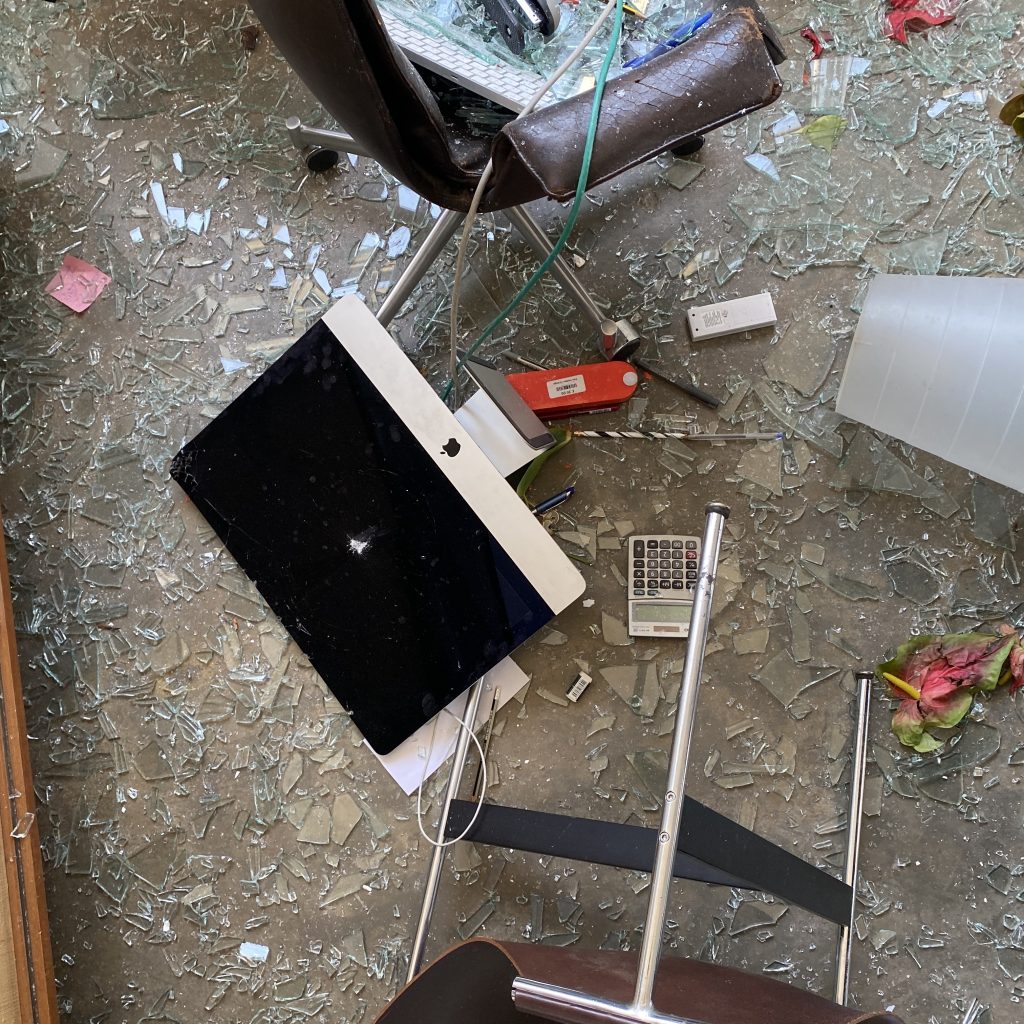
Sfeir-Semler Gallery damages after Beirut’s blast. Courtesy of Sfeir-Semler Gallery Beirut, Hamburg.
Still, as Lebanon plummeted into darkness, no one could have predicted the horrors that were to unfold on August 4th, when 2,750 tons of explosive ammonium nitrate stored without safety measures at the Port of Beirut for over six years exploded. The blast left over 5,000 wounded, more than 200 people dead, 300,000 people homeless, and the city of Beirut torn to pieces. It was as if an already desperately ill patient had been punched in the face.
“What else can happen to us?” said Mariana Wehbe, who runs an eponymous public relations firm. “From here it is only death, or we fight for our future.”
The Great Rebuild (Again)
Lebanon’s history is marked by destruction. In Beirut, wounds from the past in the form of bullet holes and bomb shelters stand beside sleek modern high rises and historical buildings. Both the Lebanese Civil War from 1975 to 1990 and the Israeli Invasion in 2006 left the city severely scarred. Over and over, the Lebanese people have picked themselves up and rebuilt.
“Our resilience is a curse,” said Mohamed Maktabi, director of carpet maker Iwan Maktabi. “I’ve been rebuilding all of my life and I don’t want to do it again! But the truth is that we will rebuild. We are here to stay. But we are rebuilding knowing that it will likely be destroyed again.”
In some ways, this time feels different. Alongside countless others from the country’s creative industry, the owner of the carpet shop next to Iwan Maktabi’s has decided to leave Lebanon.
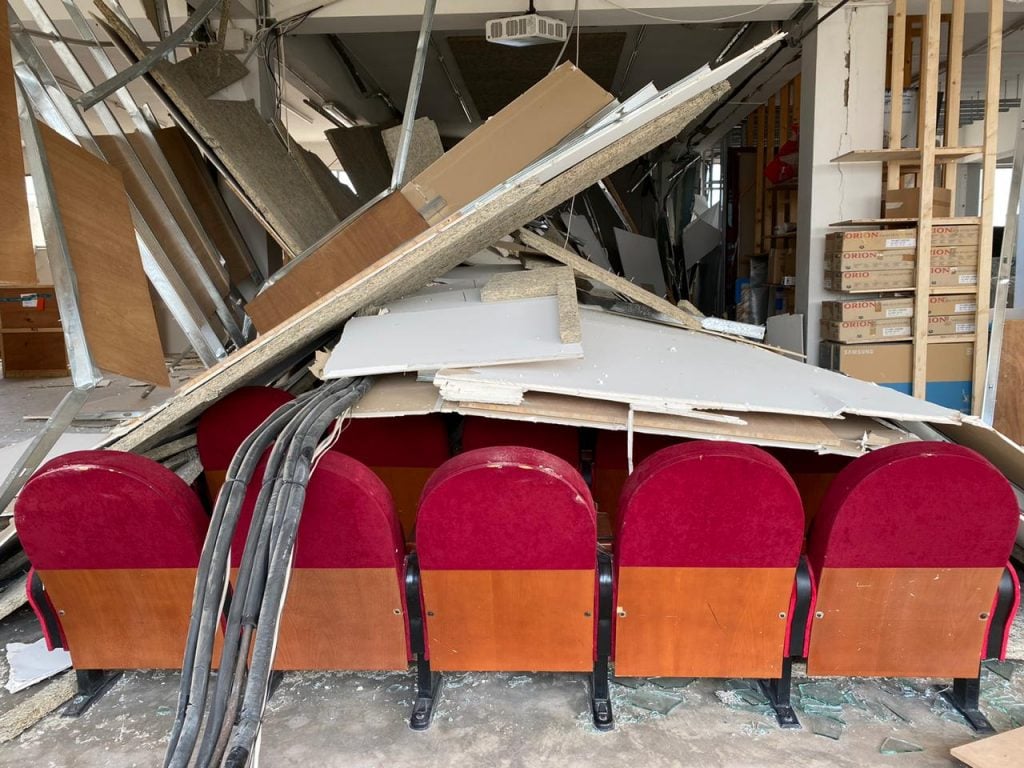
Sfeir-Semler Gallery damages after Beirut’s blast. Courtesy of Sfeir-Semler Gallery Beirut, Hamburg.
“There will be an exodus of Lebanese,” said Andrée Sfeir-Semler, owner of Beirut- and Hamburg-based Sfeir-Semler Gallery. Sfeir-Semler is working to raise money for relief organizations including the Arab Fund for Arts and Culture and Mophradat, which will help restore homes and aim to keep Lebanese people in the city. “We have transformed this gallery into an NGO,” he said.
The artwork in the gallery’s Beirut branch was surprisingly undamaged, but the gallery itself has been destroyed. “There are no walls, no computers, no electricity, and no air conditioning,” Sfeir-Semler said. “The artwork and my staff are safe and that is what is important.”
The Sursock Museum, the crown jewel of Beirut’s cultural scene and the center of cultural life during the 1960s, was also severely damaged. It reopened in 2015 after a costly restoration. “In order to be able to act fast, we need to find funding from abroad,” said director of the Sursock Museum, Zeina Aridi, who is campaigning for funds to help rebuild. “We need help quickly because the rainy season will come and damage the building more. We need to buy special glass.”
Aridi returned to Beirut from Paris in 1993 to help reconstruct the city after the civil war. “I was young, passionate and determined, but now we need to rebuild on a solid basis and with real perspective for Lebanon so that it is not always under the threat of being bombed or having war provoked or being run by Hezbollah or corrupt leaders.”
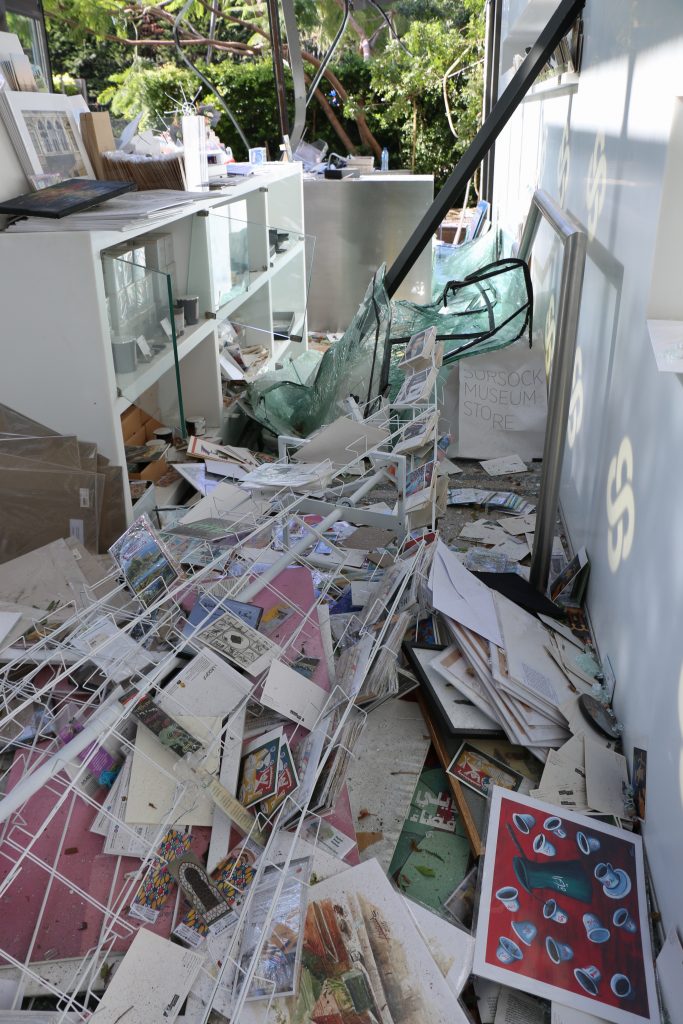
The Sursock Museum store after the blast.
Also in need of rebuilding is the Arab Image Foundation (AIF), dedicated to collecting photography from across the Arab world, which is located in Gemmayze, one of the hardest hit areas. Vartan Avakian, an artist and AIF board member, reports that the organization’s window frames were blown out, its computers damaged, and its walls and ceilings collapsed. Electricity was only restored on August 11.
But luckily, the collection and archive have not suffered major damage. “We in the cultural sector need each other now in order to rebuild,” Avakian said.
A Culture of Fear
In the 10 days since the explosions, Lebanon’s government has resigned amid mounting anger over the corruption and negligence that led to the blast. But many believe even this is not enough to produce lasting change.
Hezbollah, the country’s Shia Islamist political party, is still in power, with its connection to Iran (from which it receives military training, weapons, and financial support), and with its political affiliation to the Ba’ath government of the Al Assad family in Syria. Many in Lebanon believe that unless an international body such as France intervenes, Lebanon is doomed to become a failed state.
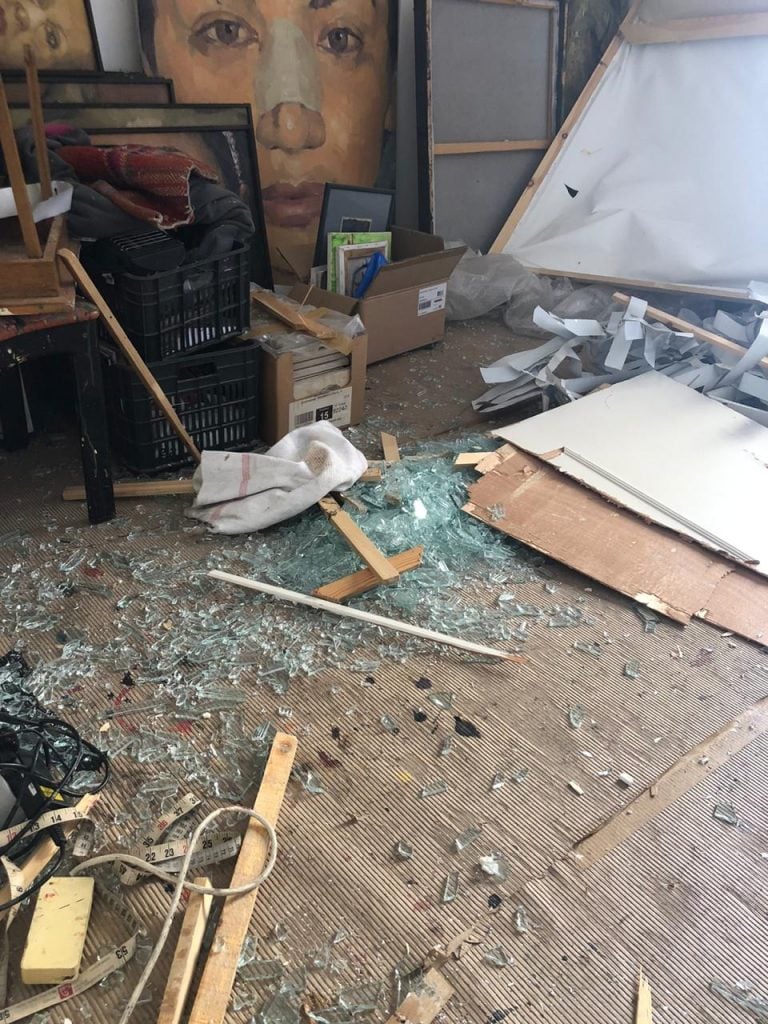
Artist Taghreed Darghouth’s studio after the explosion. Courtesy of Taghreed Darghouth.
Since protests erupted in October, activists, artists, journalists, and even ordinary citizens seen to be generally against the regime have been detained and interrogated by the military and by Lebanese internal security forces. The protests that broke out last Saturday turned violent as the Lebanese military confronted protesters with tear gas and rubber bullets.
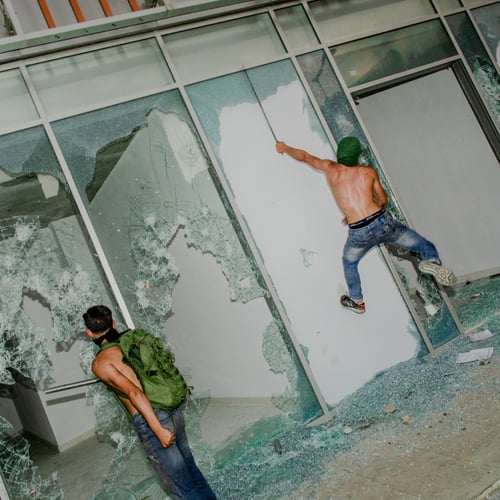
Myriam Boulos, from “The Ongoing Revolution” (2020). Courtesy of the artist.
“There are protests every night and they are shooting us,” said photographer Myriam Boulos. “Sometimes I am too scared to take pictures. We never know who they will shoot. I am trying to find new ways to document the violence because I don’t want to be shot at but also because I use a direct flash, and photographing people who have just been wounded is sensitive. I prefer going with them to the ambulance first and to ask for their consent.”
Two days ago, Boulos watched as a protester was shot in the heart.
“The army took the decision to deal harshly with the demonstrators,” said artist Taghreed Darghouth, whose studio and apartment lie in ruins. “Those who were extremely active during the Thawra (revolution) were peaceful but the [military] used their thugs to make us fearful to continue protesting. We were intimidated.”
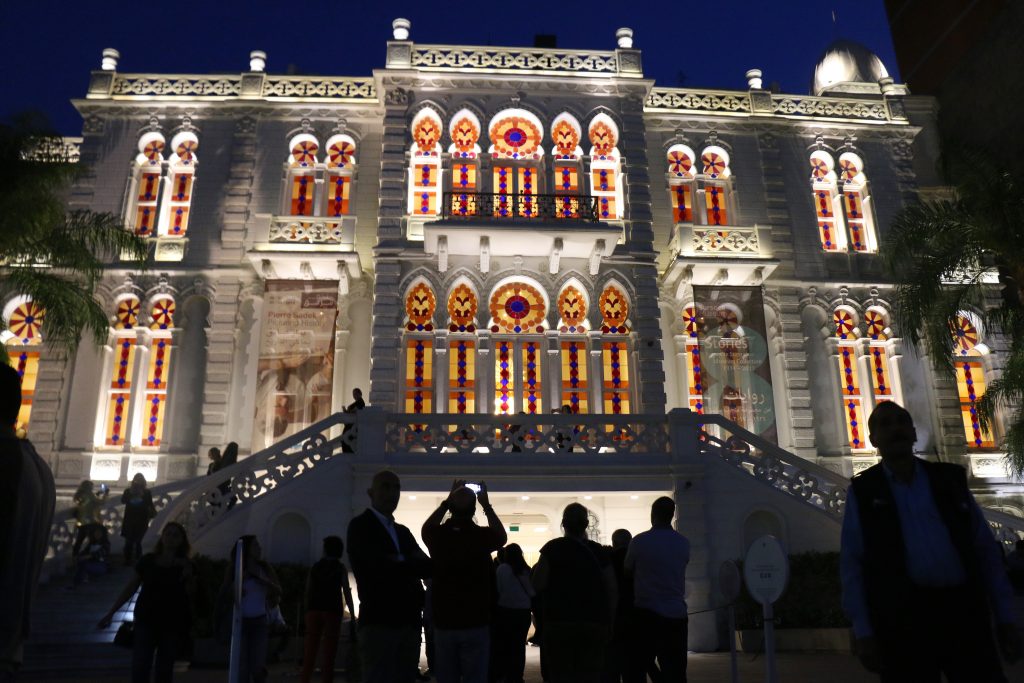
The Sursock Museum before the explosion. Photo by Rowina BouHarb
Artist Abed Al Kadiri opened a show at Beirut’s Galerie Tanit days before the explosion. The blasts destroyed not only the gallery, but also many of his artworks. Last October, he had attended the protests and was violently attacked and suffered several injuries.
“This aggression was a very clear message that we are living in a country that limits our freedom of expression,” he said. “If we dare transgress these limits, the result is punishment via aggression or death.”
Financial Hurdles
One of the biggest challenges Lebanon faces as it strives to pick up the pieces following the explosions is the sheer depth of its economic plunge.
“Everything has to be ordered from abroad,” said Aridi. “Because of the weak Lebanese dollar, the money needs to come from outside and be paid from outside. If the money comes to a Lebanese bank, they won’t give it to us.”
For several months, the Lebanese Central Bank has set withdrawal limits for those taking out Lebanese pounds. The limits hover around $200 per week (though they can be sometimes higher, depending on the size of the bank account). There is, however, a scheme known as “fresh money” that allows individuals outside of the country to transfer dollars into Lebanese accounts, enabling people in Lebanon to gain access to the entirety of the transferred sum. But many doubt how long this will last before the banks start setting limits on this money, too.
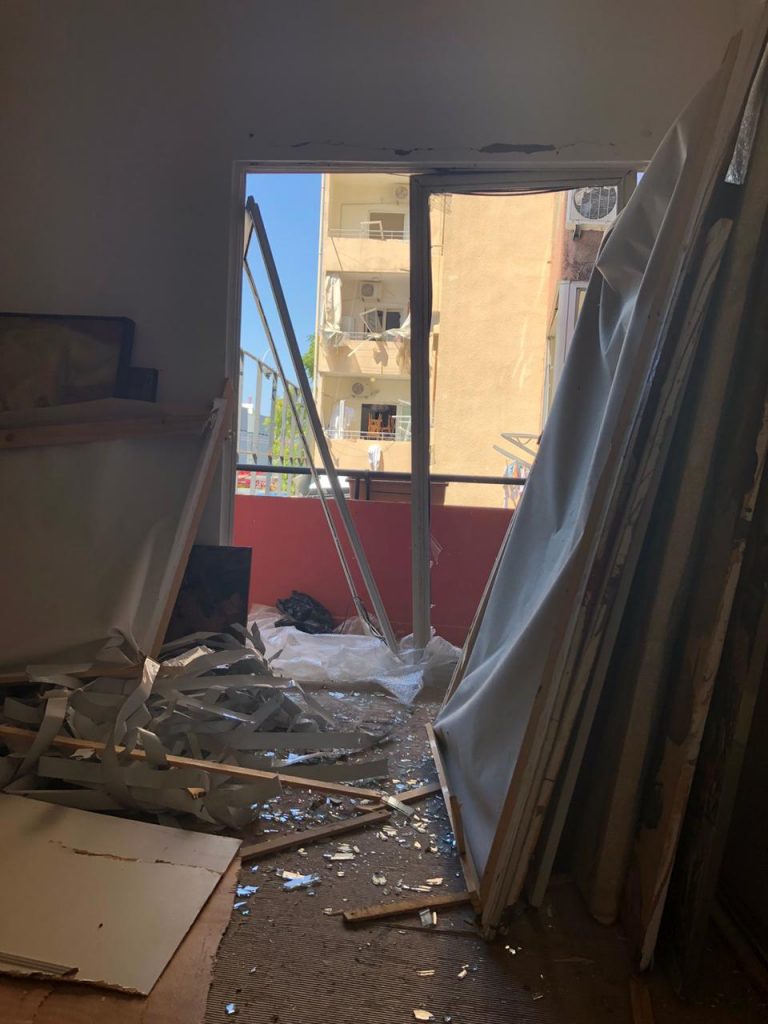
Artist Taghreed Darghouth’s studio after the explosion. Courtesy of Taghreed Darghouth.
Moreover, the damaged port served as Lebanon’s most important maritime gateway, providing the import-dependent country with food, medical supplies, and other necessities. The country’s second biggest port, Tripoli, will take over in the interim.
“All of the international aid is helping us, and we are so grateful, but the money isn’t coming fast enough, and we need immediate cash in order to fix our homes,” said photographer Omar Sfeir.
Sfeir, 26, had his home severely damaged. He is currently bouncing between the homes of friends and his family’s place in the mountains. He doesn’t want to sleep alone.
“The Lebanese are very lost right now,” he said. “We are having trouble living without fear. We see smoke from the balcony, and we run.”
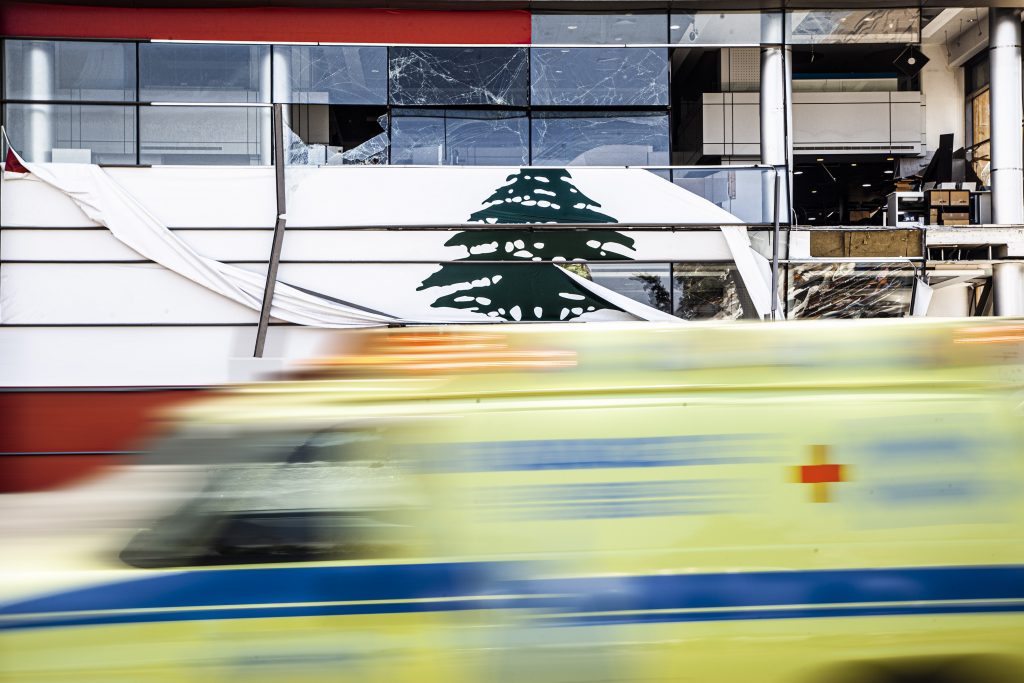
Photograph by Omar Sfeir, 2020. Courtesy of the artist.
Like others Artnet News spoke to, Sfeir believes in the importance of rebuilding. But as disaster piles on top of disaster, it becomes harder to see the future through the wreckage.
“We are all in love with Beirut,” he tells me over the phone. “It’s the same feeling as when someone falls in love and the relationship ends really badly. When you enter a new relationship you are scared. You already project the end. That’s how we are feeling now. We are traumatized.”
Organizing Relief
The following organizations are facilitating relief efforts in Beirut.
Alfanar Emergency Lebanon Appeal
Alfanar aims to raise $500,000 (£380,000) to provide emergency relief for those who have lost their homes and livelihoods.
Arab Image Foundation
The AIF is raising money to restore its damaged building, repair its computers, and and preserve its photographic archives.
Art Relief for Beirut
Mophradat will direct 100 percent of donations to arts workers and institutions, with an eye toward sustaining practices rather than focusing on individual projects.
Books for Beirut
For the month of August, all proceeds from the Mosaic Rooms’ bookshop will go to the Lebanese Red Cross.
Blooms for Beirut
Radical Blooms, a London-based florist, is donating 100 percent of the profits from dried flower arrangements to emergency relief efforts in Beirut via the Beirut Emergency Fund 2020.
Caabu’s List of Ways to Help
Caabu put together a working list of ways to help those affected by the blast, including supporting organizations on the ground as well as local Lebanese and international NGOs.
Fund for Studio Safar, Papercup, Jana Saleh
A fund to get artists’ studios back on their feet.
Impact Lebanon
A group aiming to raise £7.5 million to provide disaster relief from those affected by the explosion.
Lebanon Solidarity Fund: Fundraising Campaign for the Arts and Culture Community in Beirut
An international fundraising campaign by AFAC to support the city’s arts community.
Lebanese Red Cross
Emergency aid for those on the ground.
Long-Term Injury Donations
Contributions will help disabled victims that need access to medical rehabilitation as well as mobility equipment such as wheelchairs and prosthetics.
Queer Habibi
One hundred percent of the proceeds from postcards and posters will be directed to the Impact Lebanon fund and LGBTQ+ communities of Lebanon.
Raphaelle Macaron x Studio Fidèle – Beirut Relief Fund
A series of 12 Riso prints are available for sale, and 100 percent of the profits will be donated to Impact Lebanon. (A small portion of the money will be used to cover shipping costs.)
Super Fund for Beirut
Slow Factory’s fundraiser tasks corporations with reinvesting their marketing dollars in support of social and environmental justice, starting with the aftermath of the recent explosion in Beirut.
